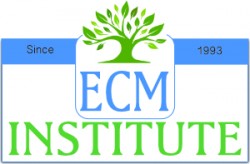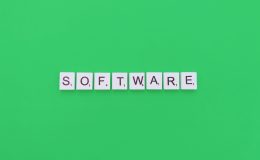
We hear the word “Cloud” used all the time. It is a nebulous term. If you meet someone on the street and the subject of the cloud comes up… are you really sure you know what they are talking about? Do they know what they are talking about? Probably not! The term is overused and what it specifically means is not well defined [nebulous]!
You would need a follow-on word, like “backup”, or “storage”, or “ECM”, etc… This is where the problem is – until someone completes the sentence, it can mean anything!
“Cloud” relating to business basically means that the software is not loaded locally on your server [called “on-premise”], it is loaded on equipment in a datacenter [building full of servers] located somewhere remote.
It also refers to the way in which you pay for the service. Cloud typically means you “pay as you go” every month. Think of it like when you signed-up for a cell phone. You didn’t buy a cell-tower, you just pay for the minutes you use. Also, in business it’s considered to be OPEX [Operating Expense] money. It’s easier to write a small check each month, rather than a LARGE check [with Board approval] to purchase a complete system!
Let me help you better understand, with some examples:
-
Cloud-backup; you leave your laptop on at night connected to the internet, and the “service” you are using automatically runs [at a certain time] and pushes your important files through the internet back to the datacenter. Your data is then backed-up.
-
Example; DataVault Backup (typically $25/mth)
-
-
Cloud-storage; similar, but there is no backup software running. Consider this “the fileserver in the sky”. You are responsible for manually uploading files and creating folders. It is considered ‘consumer-grade’ meaning your files are not encrypted during transport, you have no backup and it’s not very secure!
-
Example; BOX, Dropbox, Google Drive, or iCloud from Apple. (typically $0/mth)
-
-
Cloud-document management [ECM or Enterprise Content Management]; you have remote access to a very expensive software application, and its sole function is to effectively manage data files. They can be docs, movies, pictures, soundbites, or anything your computer can understand. Unlike cloud-storage, this is considered ‘commercial-grade’ meaning faster servers, encrypted transfers, higher security and auto-backups. Watch for features like; workflow collaboration, version control, check-in, workflow and audit-trails.
-
Example; DataVault Cloud (typically $23/GB/mth)
-
-
Cloud-applications; you have online access to typical office programs, like word-processing, spreadsheet apps and graphics programs. The main benefits are that the software is always current and up-to-date, you don’t have to buy it outright, you pay monthly [like time-sharing].
-
Example; Office 365, Google Apps for Work, Adobe Creative Cloud (typically $5 to $50/mth)
-
Now, we could talk about WHY moving to the cloud makes sense, or about the 50 or so other cloud services, like IaaS (Infrastructure as a service), or PaaS (Platform as a service), Hybrid-clouds, Private and Public clouds, but we’ll save that for another day.
In summary:
Please, when dealing with technical terms, follow this simple rule to stay out of trouble; ask questions until you fully know what the prospect is talking about. This way you will both be on the same page, and your response will be on-point with what they need. It has been said that, “The art of conversation lies in listening.” –Malcom Forbes
Byron Aulick, CEE authors training for The ECM Institute
Has been a subject-matter-expert, trainer and consultant in ECM technology for over 30 years.







